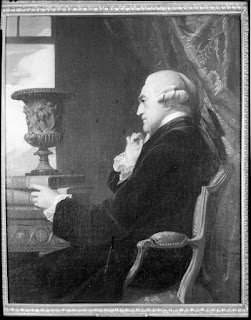Saturday, May 11, 2013 -  Art Loss Register,Boston Globe,Christopher Marinello,Harvard,John Singleton Copley,Melvyn Kohn,William Kingsland
Art Loss Register,Boston Globe,Christopher Marinello,Harvard,John Singleton Copley,Melvyn Kohn,William Kingsland
 No comments
No comments
 Art Loss Register,Boston Globe,Christopher Marinello,Harvard,John Singleton Copley,Melvyn Kohn,William Kingsland
Art Loss Register,Boston Globe,Christopher Marinello,Harvard,John Singleton Copley,Melvyn Kohn,William Kingsland
 No comments
No comments
Boston Globe's Todd Wallack on "Prized stolen art frequently resurfaces after decades"
 |
| John Singleton Copley (1738-1815) Painting of William Ponsonby, Second Earl of Bessborough, 1790 |
The Boston Globe's Todd Wallack points to the increased chance of recovery stolen art years after the theft in "Prized stolen art frequently resurfaces after decades" (May 10, 2013).
Wallack recounts the recovery of John Singleton Copley's portrait of William Ponsonby stolen from Harvard University in 1971 at the 2006 Stair Gallerie's Auction of items from the William M. V. Kingsland Estate. Melvyn Kohn, who went by the name of Kingsland, was later discovered to have died with a private collection of stolen art. Alex Acevedo, owner of The Alexander Gallery, had purchased the unattributed painting for $85,000 then discovered it had likely belonged to Harvard and contacted the FBI.
Wallack writes:
Art detectives say long-lost works like the Copley are increasingly turning up after going missing for decades, thanks in large part to readily available information on the Internet or in electronic databases. The trend is feeding hopes of art fans that the prized pieces taken from the Isabella Stewart Gardner Museum 23 years ago could eventually surface as well.
Though the vast majority of missing artwork is never recovered, stolen items are often discovered when they change hand, sometimes many years later, when brokers and buyers research the pieces online and through databases, according to brokers and others in the business.
“We’ve got recoveries happening every week,” said Christopher A. Marinello, an attorney for the Art Loss Register of London, which maintains an international database of more than 360,000 stolen, looted, disputed, or missing works around the world, including 1,000 from Massachusetts and hundreds of pieces from Harvard alone.
“It’s not that unusual to find artwork that has been lost for more than a quarter of a century,” Marinello said. “The valuable pieces either are recovered right away, or they go underground for a generation.”

